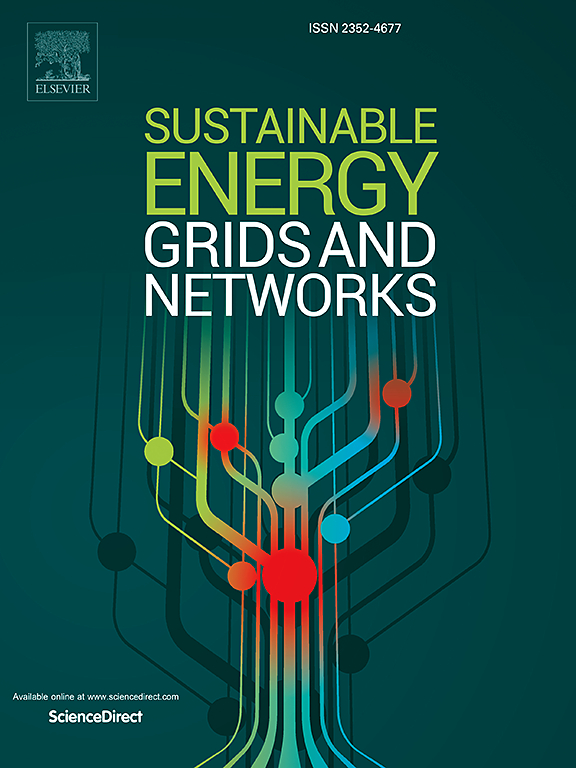Co-optimization of short- and long-term decisions for the transmission grid’s resilience to flooding
IF 5.6
2区 工程技术
Q2 ENERGY & FUELS
引用次数: 0
Abstract
We present and analyze a three-stage stochastic optimization model that integrates output from a geoscience-based flood model with a power flow model for transmission grid resilience planning against flooding. The proposed model coordinates the decisions made across multiple stages of resilience planning and recommends an optimal allocation of the overall resilience investment budget across short- and long-term measures. While doing so, the model balances the cost of investment in both short- and long-term measures against the cost of load shed that results from unmitigated flooding forcing grid components go out-of-service. We also present a case study for the Texas Gulf Coast region to demonstrate how the proposed model can provide insights into various grid resilience questions. Specifically, we demonstrate that for a comprehensive yet reasonable range of economic values assigned to load loss, we should make significant investments in the permanent hardening of substations such that we achieve near-zero load shed. We also show that not accounting for short-term measures while making decisions about long-term measures can lead to significant overspending (up to 14 %). Furthermore, we demonstrate that a technological development enabling to protect substations on short notice before imminent hurricanes could vastly influence and reduce the total investment budget (up to 56 %) that would otherwise be allocated for more expensive substation hardening. Lastly, we also show that for a wide range of values associated with the cost of mitigative long-term measures, the proportion allocated to such measures dominates the overall resilience spending.
输电网抗洪能力的短期和长期决策协同优化
我们提出并分析了一个三阶段随机优化模型,该模型将基于地球科学的洪水模型的输出与输电网防洪弹性规划的潮流模型相结合。该模型协调了弹性规划的多个阶段所做的决策,并建议在短期和长期措施中对总体弹性投资预算进行最佳分配。在这样做的同时,该模型平衡了短期和长期措施的投资成本,以及由于无法缓解的洪水迫使电网组件停止服务而导致的减载成本。我们还提出了德克萨斯州墨西哥湾沿岸地区的一个案例研究,以展示所提出的模型如何为各种电网弹性问题提供见解。具体来说,我们证明了,为了给负载损失分配一个全面而合理的经济价值范围,我们应该在变电站的永久硬化方面进行大量投资,这样我们就可以实现接近零的负载减少。我们还表明,在制定长期措施的决策时不考虑短期措施可能导致严重的超支(高达14%)。此外,我们证明了一项能够在即将来临的飓风之前在短时间内保护变电站的技术发展可以极大地影响和减少总投资预算(高达56%),否则这些预算将分配给更昂贵的变电站加固。最后,我们还表明,对于与缓解性长期措施成本相关的广泛值,分配给此类措施的比例主导了总体弹性支出。
本文章由计算机程序翻译,如有差异,请以英文原文为准。
求助全文
约1分钟内获得全文
求助全文
来源期刊

Sustainable Energy Grids & Networks
Energy-Energy Engineering and Power Technology
CiteScore
7.90
自引率
13.00%
发文量
206
审稿时长
49 days
期刊介绍:
Sustainable Energy, Grids and Networks (SEGAN)is an international peer-reviewed publication for theoretical and applied research dealing with energy, information grids and power networks, including smart grids from super to micro grid scales. SEGAN welcomes papers describing fundamental advances in mathematical, statistical or computational methods with application to power and energy systems, as well as papers on applications, computation and modeling in the areas of electrical and energy systems with coupled information and communication technologies.
 求助内容:
求助内容: 应助结果提醒方式:
应助结果提醒方式:


